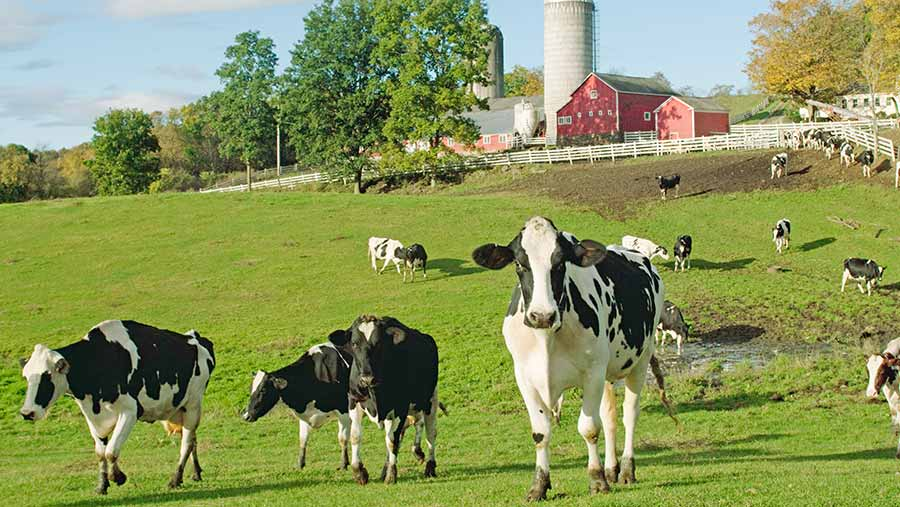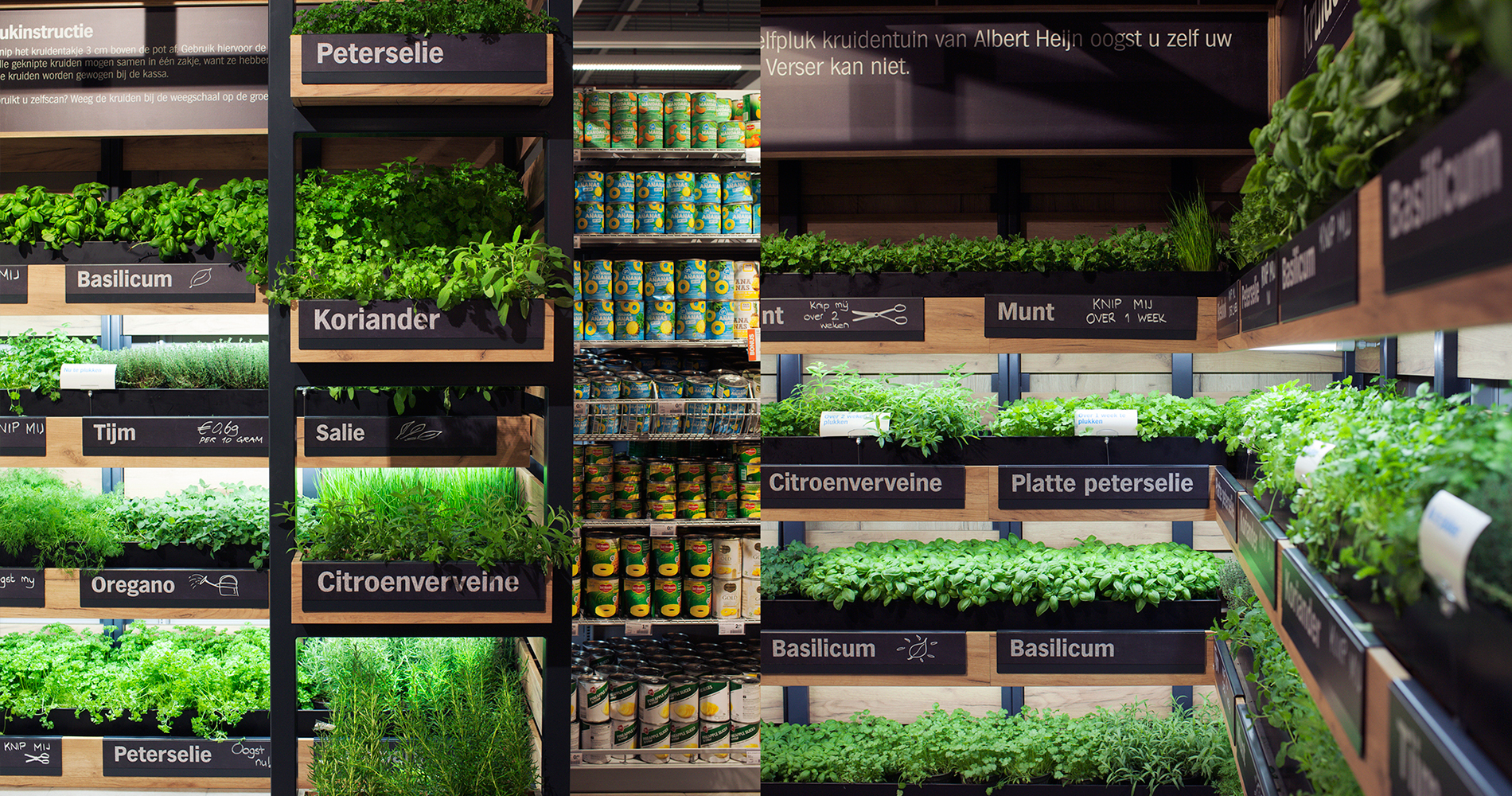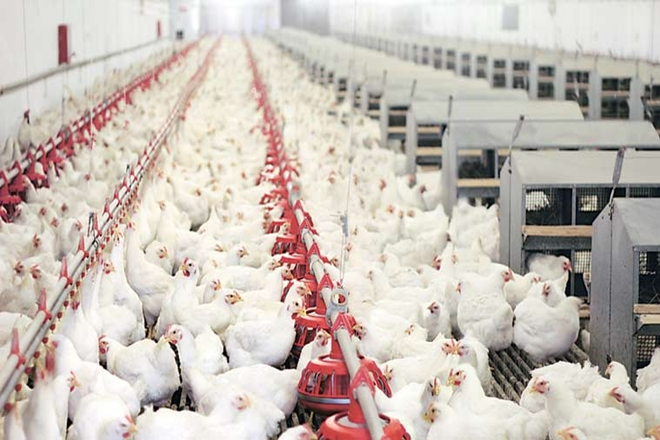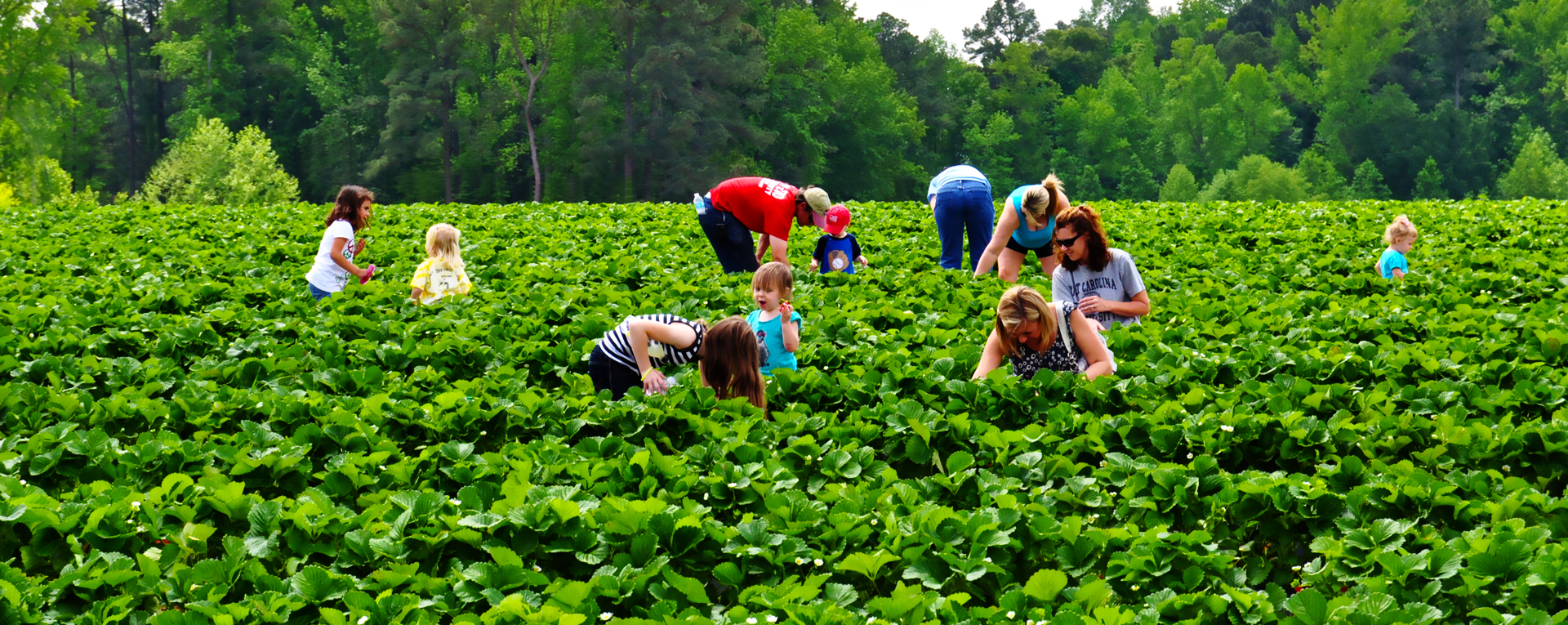Technological advancement has created more opportunities for farmers to develop a profitable business. Small farms (earning less than $50,000 annually or occupying less than 180 acres) are now considered potentially lucrative as both rural and urban business opportunities. Entrepreneurs should consider ideas like bee farms, rooftop gardens, and microgreens when choosing among profitable ventures.
Here are 20 of the most profitable small farm ideas to consider in 2019:
Rural Agriculture Profitable Small Farm Ideas
Rural farms are located in outlying areas of the country. The vast land area is perfect for cultivating food crops, rearing livestock, and hunting; however, farming activities are highly dependent upon the seasons and natural weather conditions.
1. Tree Nursery
A tree nursery can be a great investment when done right. Most farmers start with 10 to 20 seedlings in a small acre, and with the right marketing strategy, they would have the baby trees sold out before they mature. You can buy small trees for around $20 each, or raise them from scratch.
Spend some time researching how to organically source the trees you want to grow. Fruit tree propagation, for example, can be done by grafting or budding (joining parts from multiple plants), and this increases your chances of producing the same variety of trees as opposed to using seeds.
You might also consider this spin on the tree nursery idea:
“Start an adopt-a-tree program. This allows farmers to do what they do best — grow things. To start, you’ll need to have a simple website. But if you run a farm, you should have one anyway. The next thing you’ll need are the actual trees and the tools to plant them. Invest in a good quality camera to take pictures of the trees for the people adopting them. Take pictures when you plant them and as they grow to use as proof that you planted the trees. Finally, have certificates printed up to show adoption of the trees and ones that are to be given as a gift or memorial.”
— Julie Austin, CEO, Creative Innovation Group
2. Fish Farming
Fish farming is an ideal business idea for investors with available land, and it doesn’t always require a body of water. You can start a fish farm either by creating fish ponds or investing in fish tanks; it’s a highly scalable business idea. Once you have the proper knowledge of fish raising, you will be able to decide the type of fish to raise.
Fish such as tilapia, cod, and catfish are very popular choices, because they are quite easy to raise and are generally in high demand. Small scale farms are the usual suppliers of fish in their local supermarkets and restaurants.
Other popular varieties of fish that are commercially raised are:
- Eel
- Grass Carp
- Rainbow and Silver Trout
- Tuna
- Salmon
The decision as to which fish you want to raise will ultimately rely on your skill, financial capacity, market demand, and agro-climatic condition. This refers to the normal soil types, rainfall, temperature, and water availability that affects the type of vegetation in the area.
3. Dual Crop Farming
Dual crop farming or multiple cropping can be either mixed cropping or intercropping. Mixed cropping refers to raising two or more types of crops in the same area while intercropping is raising different crops in close proximity. Dual crop farming is very popular among farmers because it optimizes the use of equipment, soil, and water as well as farming supplies; it also maximizes the production of a small farm all year-round.
Farmers like that it reduces the risk of total loss from calamities, drought, pests, and diseases. Some good examples of multiple cropping are growing strawberries and watermelons in Florida, while growing wheat and soybeans in addition to corn and canola in the Carolinas.
4. Dairy Farming
According to the U.S. Department of Agriculture, factory farms provide more than 80% of milk in the market. However, there is a continuing decline in the number of licensed dairy farms, which leaves opportunities for new entrepreneurs with available land in rural areas to explore. Note that dairy farms with less than 100 cows are considered small but still require considerable investment, not to mention, the numerous rules they must follow before being awarded a license to operate.
Those who wish to go into this type of farming business will also have to learn how to improve milk volume production in order to be successful.

Small dairy farming can be a lucrative investment for farmers in rural areas if they can supply the local market demand
As with any business, there are certain risks involved when starting your own farm. Rural farms, in particular, can be seriously affected by calamities and natural disaster that threatens both crops and livestock. It is, therefore, important to be prepared by knowing your options such as how to apply for disaster loans.
Low Capital Profitable Small Farm Ideas
If you’re short on capital, there are some low-cost business ideas that are easy to start. While these types of farm businesses usually earn less than other farms that invest in land and equipment, they continue to provide a steady stream of income because the market exists.
5. Herb Gardening
People are now more conscious of what they put in their food and appreciate how these plants contribute to a better dining experience. When starting your own herb garden, make sure to emphasize variety and choose the ones that are in demand so they’re easy to sell. You can start an herb business with small roadside sales from your backyard, selling herbs that you cut, the plants, seeds, or all three. You can also sell the plants and seeds online.
If you opt to sell your herbs online, you’ll need to create a professional website so check out Bluehost for reliable web hosting service to make sure your website is always online. It also offers domain registration and a business email address, all for just $2.95 per month. Sign up to get your online shop hosted today.
6. Bee Farming
Apiculture or beekeeping often starts as a hobby, and the capital needed to begin is quite low. Beginner beekeepers can start operating a bee farm with $500-$1,000. With this amount of startup capital, they can sell bee byproducts such as beeswax, bee pollen, royal jelly and of course, honey, that’s very popular among consumers.
Bee pollen and royal jelly are considered superfoods and are sold at a high price. You only need a small area in your backyard but you still have to check with your local government unit first to see if they allow beekeeping in your area.
There are many ways to get your first set of bees:
- Catch a swarm: If you live at a location where bees are often found, you can opt to catch your own swarm for free.
- Buy a bee package: This package consists of about 3 pounds of bees with a young, mated queen. Large bee farms regularly sell bee packages around April for about $120 each.
- Nucleus hive: Typically consists of a box with five frames of bees, brood, pollen, nectar, and a fertile, laying queen bee. They are sold between April to June for about $150.
- Full hive: This simply means an entire hive setup, including an existing colony that large beekeepers sell to beginner bee farmers for around $300 each.
- Split hive: Split hives are created when several frames of an existing colony are moved to a new box where a new queen is introduced. They’re often sold for around $200 each.
Beginner bee farmers are encouraged to purchase a nucleus hive as it helps them learn the basics of beekeeping and nurture its growth. You will also need other equipment such as protective gear, hive tools, a bee brush, and a honey extractor.
7. Aquaponics
Aquaponics is a farming method that combines aquaculture (raising aquatic animals) with hydroponics (cultivating plants in water). This means farmers produce crops without requiring as much water or land area. It translates to a lower investment cost and more potential for profit as it’s known to produce crops faster and in greater volume. Experts advise beginners to start small and expand as they learn how to maximize their production.
There are consultants who can assist you in starting a commercial aquaponics system in a 1,200 square feet greenhouse for as little as $1,000. When done right, farmers are able to sell $25,000 worth of crops in a year.
8. Microgreens Farming
Microgreens are young vegetables or baby plants that are around 10-14 days old and one to 3 inches tall. They are the small edible vegetables that restaurants use as garnishing for a dish or serve in a salad. You’ll find that they’re in high demand; customers like their visual appeal and health benefits. Beginner farmers should consider this business, because microgreens are easy to grow, turnaround time is high, and it requires little investment to start.
And because they can be grown in a small space, even indoors, and sold for as high as $50 per pound to restaurants depending on the variety, they are considered a highly profitable investment.

With the right strategy, farming herbs and microgreens for commercial use can be a very lucrative small investment venture
Generally speaking, the more land required to start a farming business, the higher the investment cost. As the cost of an acre of farmland averages to around $3,140/acre around the country, maximizing the use of a small land can help in bringing down the cost of starting a farm business.
Urban Agriculture Profitable Small Farm Ideas
Urban agriculture is a farming business located in densely populated areas such as cities. This mostly refers to cultivating, processing, and distributing food products but can also include small scale livestock and fishery. Space and pollution are the primary challenges for urban farmers but also motivates them to develop new farming strategies aided with technology. Since they are located closer to local restaurants and supermarkets, urban farmers can supply fresh produce faster and easier.
9. Vegetable Landscaping
Starting a landscaping business can be expensive, but farmers who want to opt for a greener path should enter this world of edible landscaping. This option creates more flexible opportunities so your required startup capital will be considerably lower. You will mostly be investing in tools to grow vegetables either on freshly tilled soil or in containers. When using pots, remember to purchase the ones that are eight to 12 inches deep; also, space them out evenly, so you can maximize your yield.
“Urban areas have many food deserts — places where there are no quality products available for residents. There are also many suburban homeowners with too much landscape to maintain on their own. By launching an urban vegetable landscaping business, you can tap into readily available lawns that homeowners do not wish to maintain themselves. They will pay you for your work (and workers), and all you need to do to keep them happy is offer a few vegetables in return each week. Take the surplus product, and sell it at a local farmers market or on street corners if permissible.”
— Gregory Heilers, Agricultural Technology Writer, G.P. Heilers Writing & Editing
10. Hydroponic Farming
Hydroponics is the process of growing crops with nutrient-rich water kept in contact with the plant roots instead of using soil. This process significantly reduces the risk of wastage and pollution that can harm the produce and cause diseases, making it popular to health-conscious consumers. Like aquaponics, the minimal use of land area needed also makes hydroponics a low-cost investment while increasing the growth rate of plants to 25% of a well-designed garden; this means you will have more products available to sell.
There are different hydroponic systems farmers can learn and try:
- Static: Plants are grown in tubs or plastic buckets. Water may be unaerated or only gently aerated (water infused with gas).
- Continuous flow: The nutrient-rich water solution constantly flows past the roots, so plants can absorb oxygen better.
- Aeroponics: Plant roots are only misted with nutrient solution instead of submerged in liquid.
- Ebb and flow: Plants are flooded with water and then drained several times a day.
Hydroponics is all about careful management of the environment for your plants. So while it seems like an easy business to try as a beginner farmer, take your time analyzing your options and learning about hydroponics from experts before you start your own.
11. Cannabis Farming
If you live in an area where cannabis use is legal, then you should take advantage of the available space and start your own small cannabis farm. Although you can produce better quality plants in a controlled environment, the easiest way to start is growing them outdoors. Having a large backyard is an advantage; It helps keep your investment low, while giving you a flexible space with which to work.
Farmers should expect spending $10-$17 per square foot of area used to cultivate weed outdoors. After a while, you can improve your business by building a small greenhouse, and the things you learned when you started farming cannabis can help you design an efficient, controlled environment.
12. Rooftop Tea Garden
In cities, maximizing space is important and this includes being able to balance air quality by creating more space to plant greens. While rooftop gardens are already common in urban areas, there are still a number of ideas that you can try and turn into a business venture. One of which is starting your own rooftop tea garden. You can grow a variety of aromatic and medicinal herbs and greens to sell directly to consumers.
Another option is to find a partner to help you start a rustic coffee and tea shop directly on the rooftop. Partners can be those who have access to a rooftop so you can invest less money or someone who is knowledgeable in starting a coffee shop.
Some important things to consider before designing your rooftop garden:
- Review building codes: Check with your local government to see if there are rules about creating rooftop gardens in your area. Also ask about possible restrictions that can affect the kind of business you want to put up.
- Monitor how much the roof is exposed to the elements: Sun and wind exposure are critical if you want to properly grow your tea garden. Make sure that your plants will get enough sunlight and shade and are protected against strong gusts of wind; it’s a good idea to include solutions for these issues in your business plan.
- Determine your rooftop’s loading capacity: Rooftops do have a maximum limit to the weight they can hold, and it is important to know and take this data into account when designing your garden. Consult with a structural engineer who can determine this information exactly and keep the building and your business safe.
It can take a lot of work to start your own rooftop tea garden, but there are so many potentially profitable niche ideas that’s worth trying once it’s done. Beginners should do their research and get inspiration from existing tea (or other garden) owners for a unique business idea.

Rooftop farmers have the advantage of creating a versatile space for a combination of business ideas
Low cost farm businesses can be profitable and have lots of potential for growth. What’s best about starting small is having the opportunity to learn and become an expert in your chosen field and build your brand along with your plans for expansion.
B2B Profitable Small Farm Ideas
B2B farming is a business method that farmers use when producing agricultural products to supply business clients. Businesses prefer to deal with farmers directly for the low cost and quality by getting produce directly from the source. Examples of business clients are grocery stores and restaurants that re-sell these products in their original or processed form to customers.
13. Snail Farming
Heliciculture, or snail farming, can be a very lucrative business venture. Most large snails are edible and can be sold at a high price, but certain types are more preferred than others; it mostly depends on your location so it’s important to learn the basics. This includes identifying the right habitat for the snails you plan to use, knowing their food source, understanding their mating process, and managing their environment.
Snails thrive in areas like California where the climate and well-tilled soil are suited to their growth, and since they are considered agricultural pests, you can easily ask organic farm owners to let you harvest them.
Some of the things you need to consider when starting a snail farm are:
- Climate control: The ideal temperature for growing snails is between 16° to 24°C, so you should include sprinklers and humidifiers in your equipment.
- Soil requirements: Snails thrive in well-cultivated soil and groomed gardens because of their nutrient-rich quality. Calcium in soil is important for the snail’s shell. Soil should also be at least 2 inches deep for egg laying purposes.
- Farming system: This refers to having protective snail pens that are either inside a building, plastic tunnel houses, or greenhouses, all of which emphasizes the need for a controlled environment.
- Food source: Snails also drink water and will mostly eat various types of feeds, but they also survive on natural food such as vegetables like cabbage, flowers, fruits, most green leaves, and microscopic algae.
- State regulations: Interstate movement and shipping of snails are strictly controlled by the U.S. Department of Agriculture as these creatures are considered invasive plant pests. Check for your state’s rules and requirements on raising a snail farm so you can obtain the necessary permits to operate.
Snail farming is still considered a niche in the U.S., so there is more opportunity for farmers to profit by supplying fresh snails to restaurateurs and other snail enthusiasts. There’s also a growing demand for snail slime in the cosmetics industry, so do some research and find out how you can potentially become a supplier.
14. Mushroom Farming
Mushrooms are relatively easy to cultivate, considering that they can grow in the wild, even in the harshest of conditions. Making a profitable business out of mushroom farming will depend on knowing which mushroom strain to cultivate and how to maximize your production, enough to become a steady supplier to other businesses.
Gourmet mushrooms such as oyster and shiitake are some of the most sought after variation of mushrooms in the market. They can be grown indoors in a controlled environment for a much larger harvest. It only takes an average of six weeks to grow and harvest mushrooms that are ready to be sold. Mushroom farmers harvest an average of 25 pounds of produce per square foot every year and sell them for at least $12 per pound.
15. Organic Farming
Generally speaking, organic farming is a method of raising crops and livestock, but thanks to a growing market of health conscious-consumers, this method has created a niche of its own. Nowadays, you’ll find restaurants and supermarkets that market specifically for organic produce. These businesses rely on organic farmers to supply them with organically grown fruits and vegetables and organically raised, or free roaming, livestock. Organic farming is said to be 22-35% more profitable than its conventional counterparts.
Some of the popular organic farms to consider are:
- Farm-to-Table Restaurant
- Organic Grocery Wholesaler
- Organic Dairy Farm
- Organic Produce Farm
- Organic Livestock Farm
- Organic Fish Farm
The Organic Trade Association (OTA) has reported a sustained increase in demand for organic produce, and in 2018, recorded more than $50 billion in sales. This proves the potential of organic farming is a lucrative business venture, even for new farmers.
16. Poultry Farming
Poultry farming allows you to supply poultry products to other businesses. As there is consistent demand for poultry products, it remains an attractive investment option for potential farm owners. The downside is that poultry farming is highly regulated to ensure the safety and health of the residents within the community. Learn as much about the business as possible including finding the right location and getting ready with all the requirements to get started.
And because running a poultry farm can be a tedious task, it’s helpful to use automation tools to make inventory and sales more manageable. QuickBooks Desktop Pro is QuickBooks’ dedicated desktop accounting software for small businesses. Its features include invoicing, inventory monitoring, and expense tracking that’s perfect for tracking cash sales and farm expenses. Visit QuickBooks Desktop Pro today.

Poultry farming is still one of the most profitable businesses for farmers who are looking to break into the B2B market
Starting a small farming business aimed at supplying a large volume of produce to your local market can be costly. While creating your business plan, be sure to include opportunities to get small business grants to help fund your new venture.
Agritourism Profitable Small Farm Ideas
Agri- or farm tourism is a business model that derives the majority of its income from attracting visitors to experience and learn about farm life. Agritourism activities include visiting a working farm and selling fresh, organic, or even homemade produce. Both urban and rural farms benefit from this business structure, but business owners will have to invest more in advertising and marketing strategies.
17. Flower Farm
Flower farms are a popular destination for tourists, but apart from that, this type of business is versatile. It can create other avenues for income such as supplying flower shops and connecting with event organizers for decorations. You can even start a low cost flower farm in your backyard for about $2,000 and grow from there. Like other businesses, research is key to growing your flower farm.
“One example of an agricultural business idea is a sunflower maze. A business owner can plant hundreds of sunflowers and charge a small fee for visitors to stroll through the beautiful fields of flowers every summer. They can then sell bouquets of sunflowers and other sunflower decor items at the entrance to the maze. Also, local photographers and brides will pay to reserve the field for special photo shoots. Startup costs are low — just seeds, labor, and the reasonable rental fee for an unused field by the roadside.”
— Marsha Kelly, Marketing Consultant, Best 4 Businesses
18. Fish Farming
Fishing is a very popular recreational activity in the U.S., so if you’re a fish farmer, you can start accepting visitors to fish in your ponds or lakes. Extra-large fish farms can even host different types of sport fishing and draw in more crowds. You can charge visitors by day or per pound of fish that they catch. A good marketing strategy to help you boost sales, especially if you charge per pound of fish, is to create an area for barbecuing or a rustic style restaurant where visitors can ask to have their freshly caught fish cooked for them.
19. Animal Petting Farm
Most farmers get into the petting farm business to augment their income from selling eggs, dairy, and livestock. Petting farms are not only for student field trips; families like them, because they provide a more interactive experience for their children. Some businesses use them as an opportunity to hold team building events. Customers who pay the entrance fee expect an educational experience, so have them engage with the animals while being supervised by your staff.
Also, be open to giving customers a sample of the products (eggs, dairy) you get from each animal. Don’t hesitate to put up a small store where they can buy more food products to bring home. Safety will be your first priority when you invest in an animal petting farm. Make sure your staff is well trained to instruct and supervise. They will also need to be know how to administer first aid.
20. Fruit Picking Farms
Fruit picking is a popular weekend activity for families, and small farms have found this to be a lucrative venture. Most entrepreneurial farmers who consider offering fruit picking have had a running farm for some time and are looking to expand their income method. There are also hobbyists who are interested in starting from scratch, but they are more focused on generating income from the tourism aspect of the farm.
One advantage of having a “pick-your-own farm” model is that you’re able to hire fewer people to harvest your products, which reduces overhead costs. Additionally, buyers come to you, so you also reduce the cost of transporting your produce.
Fruit picking farms interact directly with customers so there are additional things to consider:
- Consider planting more than one type of produce if possible. Berry picking is also popular and can attract more customers.
- Provide ample parking space for visitors.
- Consider the pesticides you use for your crops, and remember that your customers can be exposed if not properly handled.
- Invest in customer service training for your staff.
- Don’t ignore opportunities to supply other businesses with your produce.
Your business will largely depend on customer feedback. Be sure to make your farm safe and clean, and ensure that your staff is efficient and helpful.

Pick-your-own farms are a popular destination for families and large groups looking for quick weekend trips, so make sure you provide the best experience.
Once you venture into Agritourism your business will require a more in-depth marketing strategy such as creating a website, designing loyalty programs, and managing your social media presence. But instead of hiring experts full time, you can choose to hire freelancers who can get you the same results for a fraction of the cost.
Upwork is an easy to use website that provides freelancers of all types. Its database has a list of over 10 million verified freelance experts you can choose from so you can easily hire someone that matches your requirements. Register with Upwork for free today.
Bottom Line
Agriculture remains to be a crucial industry in the U.S. as the country is recognized to be one of the largest producers, consumers, and exporters of agricultural products in the world. With the human population expected to grow to 9.7 billion by 2050, there will be definitely more demand for farmers in the future. If you are seriously considering going into the farming business, our list of farming business ideas can help you get started.
Want to add more to our list of profitable small farm ideas? Share them with us in the comments.
Read More



0 تعليقات